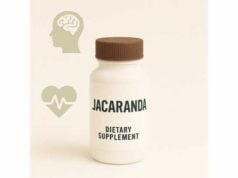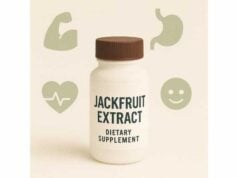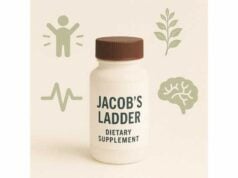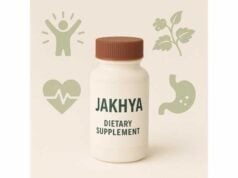
Juniper berry (Juniperus communis L., galbulus) is the aromatic, blue-black cone of the common juniper—a conifer native to Europe, Asia, and North America. Long valued in food and herbal traditions, juniper lends bright, resinous notes to meat, vegetables, and gin, and its berry preparations have been used for digestive comfort and urinary flushing. Modern analyses attribute many of its effects to volatile oils (notably α-pinene, sabinene, and limonene), phenolics, and small organic acids. People turn to juniper for short-term support with fullness and gas, to complement increased fluid intake during mild lower urinary complaints, and for general antioxidant fragrance-based wellness in culinary use. At the same time, juniper is not a cure-all. Its diuretic reputation hinges on adequate hydration, and prolonged or high-dose use can irritate the kidneys and stomach. This guide explains what’s in juniper berry, what evidence supports its uses, how to choose and dose products responsibly, and when to avoid it or seek medical care.
Key Facts
- Most consistent uses: short-term digestive comfort and adjuvant urinary flushing with increased fluids.
- Active profile: essential oil rich in monoterpenes plus phenolics; composition varies by origin and processing.
- Typical adult dose: 2–4 g crushed berries as tea 2–3 times daily, or 250–1,000 mg/day standardized extract.
- Safety caveat: avoid long courses; prolonged or high-dose use may irritate kidneys or stomach.
- Avoid if pregnant or breastfeeding, with kidney disease, or when on strong diuretics unless advised by a clinician.
Table of Contents
- What is juniper berry?
- Does it work: benefits and mechanisms
- How to use it correctly
- Dosage: how much and when
- Side effects, interactions, who should avoid
- Evidence: what the studies show
What is juniper berry?
Juniper “berries” are actually small, fleshy cones (galbuli) produced by the common juniper. They mature over two to three years, shifting from green to deep blue-black, and carry a distinctive pine-citrus aroma from their essential oils. In herbal practice, the whole or crushed galbuli are used as teas, tinctures, or standardized extracts; cosmetic and topical products may include juniper essential oil distilled from berries, leaves, or twigs.
Key constituents and why they matter
- Essential oil (EO): Dominated by monoterpene hydrocarbons such as α-pinene, sabinene, limonene, and β-myrcene, with smaller amounts of terpinen-4-ol, bornyl acetate, and sesquiterpenes. These volatile compounds contribute to fragrance, perceived airway freshness, and some antimicrobial and carminative actions in vitro.
- Phenolics and flavonoids: Quercetin derivatives, catechins, and phenolic acids provide antioxidant capacity. Though less concentrated than in many berries eaten by the handful, these molecules still add to redox balance in extracts and teas.
- Organic acids and sugars: Minor contributors to taste and extraction behavior.
- Chemotype variability: Composition can shift with geography, sex of plant, altitude, harvest timing, and whether the product uses berries versus foliage. Reputable products document plant part, origin, and—ideally—analytical markers.
Traditional and contemporary uses
- Digestive support: Short courses for post-meal fullness, gas, and slow digestion.
- Urinary flushing: As an adjunct to increased fluid intake in minor urinary complaints (without fever or systemic symptoms).
- Culinary wellness: As a spice, juniper elevates flavor while lending gentle fragrance-based ease.
What juniper is not
- Not a stand-alone therapy for urinary tract infections.
- Not appropriate for long-term daily diuretic use or for people with kidney disease.
- Not a pregnancy-safe herb.
Quality signals on a label
- Botanical: Juniperus communis L.; plant part: galbulus (pseudo-fructus).
- Preparation: comminuted berry, tea bag, fluid extract, tincture, or standardized dry extract (with DER and solvent).
- Testing: identity, purity (pesticides, heavy metals), and microbial limits; ideally, chemotype analysis for EO-rich forms.
Does it work: benefits and mechanisms
Digestive comfort and carminative effects
Juniper’s volatile oils relax smooth muscle tone in preclinical models and enhance digestive secretions in traditional use. Practically, a warm cup of juniper tea taken after a heavy, fatty, or slow-moving meal can subjectively reduce pressure and gas. The effect is gentle and tends to be most noticeable when paired with mindful eating and adequate hydration.
Urinary flushing (with fluids)
Historically, juniper appears in “species diureticae” mixtures to increase urine volume and mechanically flush the lower urinary tract. Modern herbal monographs still permit this short-term, adjuvant use, emphasizing that it works in concert with drinking more water. The essential oil may mildly irritate renal epithelium at higher exposures, which is one reason to keep courses short and to avoid use in kidney disease.
Antimicrobial and biofilm-modulating signals
In vitro, juniper essential oil inhibits a range of bacteria and some fungi. Activity varies with chemotype and concentration; α-pinene, limonene, and terpinen-4-ol are frequently implicated. These findings help justify culinary and topical use patterns, yet they do not substitute for antibiotics when infection is suspected. Consider juniper’s antimicrobial profile supportive, not primary therapy.
Antioxidant and inflammatory tone
Juniper extracts show free-radical scavenging and can raise endogenous antioxidant enzymes in cell systems. Phenolics and certain terpenes also modulate signaling pathways related to inflammation. In daily life, this looks like a background wellness effect rather than a direct remedy for inflammatory disorders.
Metabolic and skin interest (early-stage)
Experimental work explores effects on lipid oxidation, glucose handling, and skin microbiome balance. Some cosmetic formulations add juniper EO for scalp or blemish care due to fragrance and cleansing. Because responses are chemotype- and formulation-dependent, choose reputable products and patch test topicals.
Real-world translation
- Juniper works best as a short-term adjunct—after rich meals, during brief urinary flushing with fluids, or as a kitchen spice.
- Benefits depend on dose, duration, and product type: crushed berries for tea may be gentler; tinctures and EO-rich extracts feel stronger but carry more irritation potential.
- People who respond often notice effects within a few uses; lack of benefit after a week suggests stopping or switching strategies.
How to use it correctly
Pick the right form for your goal
- After-meal comfort: Comminuted berries as tea offer warmth, aroma, and steady extraction.
- Short-term urinary flushing: Tea or labeled dry/fluid extracts taken with generous water intake; avoid if you have kidney disease or fever.
- Culinary: Lightly crush berries to release aroma; 3–6 berries flavor a stew for four.
- Topical/cosmetic: Products with low-dose juniper EO can be refreshing; avoid undiluted EO on skin.
Smart routines
- Start low. Try 1 cup of tea or the lowest labeled extract dose to test tolerance.
- Limit duration. Use for up to 2 weeks for digestive goals and up to 1 week for urinary flushing, unless a qualified professional advises otherwise.
- Hydrate. For urinary support, accompany each dose with a full glass of water unless fluids are restricted by your clinician.
- Space from other diuretics. Avoid combining with strong prescription or OTC diuretics unless your clinician agrees.
- Watch for signals. New flank pain, fever, burning urination, or blood in urine warrants medical assessment—not more juniper.
Label literacy in 30 seconds
- Name and part: Juniperus communis L., galbulus/pseudo-fructus.
- Preparation: tea cut, tincture, fluid extract, or dry extract with DER (e.g., 4–6:1) and solvent (water, hydroalcoholic).
- Directions: grams per day for teas; mL or mg for extracts; maximum duration.
- Quality: batch or certificate of analysis, allergen statement, and storage guidance.
Pairing and stacking
- Digestive: Pair juniper tea with bitter aromatics (gentian, artichoke leaf) before meals or carminatives (fennel, caraway) after meals.
- Urinary flushing: Combine with hydration strategies (water, unsweetened herbal teas). Avoid cranberry megadoses if you’re prone to gastritis.
- Lifestyle: Slow down meals, chew thoroughly, and reduce late-night heavy dishes to prevent recurrence.
When to skip juniper
- Kidney disease, edema due to heart or renal issues, pregnancy or breastfeeding, and children (unless specifically advised).
- If you already follow a sodium-restricted regimen with diuretics, discuss any herbal diuretic with your clinician.
Dosage: how much and when
Food and tea (traditional ranges)
- Tea infusion: 2 g crushed juniper berries in 150 mL boiling water; steep 10–15 minutes; take 2–3 times daily for up to 2 weeks for digestive support.
- Incremental berry method (traditional): Some traditions begin with 5 berries on day 1, increase by 1 berry per day to 15, then reduce by one daily back to 5 (approximately 21 days total). Many modern clinicians prefer simpler tea or extract dosing to avoid long courses and potential irritation.
Standardized extracts
- Dry extract: 250–1,000 mg/day in 1–2 divided doses. Choose products standardized by DER and/or essential-oil content, and follow labeled duration limits.
- Fluid extract/tincture: Follow manufacturer’s mL per dose (often 1–2 mL, up to 3 times daily), taken with water. Tinctures include ethanol; consider alcohol-free alternatives if needed.
Timing
- Digestive: After meals or at first signs of post-prandial fullness.
- Urinary flushing: Spread doses through the day with ample fluids; avoid close to bedtime to reduce nocturia.
Special groups
- Older adults: Begin at the low end and shorten duration; monitor for lightheadedness or stomach irritation.
- People on complex regimens: If you take diuretics, lithium, or multiple antihypertensives, consult your clinician before using juniper due to hydration and electrolyte considerations.
- Topical EO products: Respect low percentages (often ≤1% in leave-on cosmetics, higher only in rinse-off). Patch test behind the ear or on the forearm for 24 hours.
What not to do
- Do not exceed label directions or extend courses “just because it’s natural.”
- Do not rely on juniper for suspected urinary infection; seek prompt medical care.
- Do not ingest essential oil directly; it is concentrated and can be irritating or toxic if misused.
Measuring practical benefit
- Track a single metric (e.g., post-meal bloating score, number of nighttime awakenings for urination) for 7–14 days. If no benefit, stop and reassess.
Side effects, interactions, who should avoid
Common and mostly mild
- GI irritation: Heartburn, stomach upset, or nausea—more likely with higher doses, strong tinctures, or essential-oil-rich products.
- Urinary irritation: Burning with urination if overused; signals a need to stop and hydrate.
- Skin sensitivity: With topical EO products, redness or stinging at higher concentrations or on compromised skin.
Less common but important
- Kidney irritation: Historically reported with prolonged, high-dose use. People with kidney disease are at higher risk and should avoid juniper.
- Allergy: Rare, but possible; stop at the first sign of rash, itching, or swelling.
- Photosensitivity: Not typical for juniper berry, but any irritated skin may feel more sensitive to heat or sun.
Interactions
- Diuretics: Additive effects on urine volume; risk of dehydration or electrolyte imbalance.
- Lithium: Any herb that alters fluid balance requires extra caution; dehydration elevates lithium levels.
- Antihypertensives: Large fluid shifts and mild vasodilation from aromatics may accentuate low blood pressure in sensitive people.
- Hypoglycemics: Whole berries have small amounts of sugars; effects are usually minimal, but monitor if tightly managed.
Who should avoid juniper
- Pregnant or breastfeeding individuals: Avoid due to historical emmenagogue reputation and insufficient safety data.
- People with kidney disease or edema due to heart/renal issues: Avoid; diuretic flushing is contraindicated when fluids are restricted or kidneys are compromised.
- Children: Not recommended without clinician guidance.
- Those with active urinary symptoms (fever, blood, severe pain): Seek medical care rather than self-treatment.
Stop and seek care if
- You develop fever, flank pain, blood in urine, or worsening burning with urination.
- GI symptoms escalate to vomiting or severe pain.
- You notice facial swelling, wheeze, or hives (possible allergy).
Safe-use checklist
- Choose galbulus/pseudo-fructus products from reputable suppliers.
- Keep courses short and dose moderate.
- Pair urinary use with increased water intake unless medically restricted.
- Avoid undiluted essential oil ingestion or high-concentration topical use.
Evidence: what the studies show
Regulatory monographs and traditional indications
European herbal authorities list juniper berry for short-term relief of dyspepsia/flatulence and as an adjuvant to urinary flushing with adequate fluids. Posology typically centers on 2 g of crushed berries per cup, 2–3 times daily, or labeled extracts for limited duration. Safety notes emphasize no use in severe renal disease, careful hydration, and avoidance in pregnancy and breastfeeding.
Chemistry and variability
Recent surveys confirm that EO yield and composition change with geography, sex, and habitat. Even within one country, α-pinene, limonene, sabinene, and terpinen-4-ol proportions can shift significantly, affecting aroma and bioactivity. This chemotypic spread explains why two juniper products may differ in perceived potency and tolerability despite similar labeling. It also underscores the value of standardized extracts and transparent analytical data.
Antimicrobial and antioxidant profiles
Laboratory studies show juniper EO inhibits common gram-positive bacteria and some gram-negatives and fungi, with minimal inhibitory concentrations driven by monoterpene content and synergy among minor constituents. Antioxidant assays (e.g., DPPH, FRAP) demonstrate moderate activity for berry extracts and more variable activity for foliage oils. These findings support culinary hygiene and cosmetic roles but do not equate to clinical anti-infective efficacy in humans.
Clinical data
High-quality randomized trials for juniper berry alone are limited. Most human-facing insights derive from traditional posology, observational use, and combination formulations within diuretic teas. Given this landscape, best practice is to use juniper as supportive care—for digestive comfort and short-term urinary flushing—while relying on established medical evaluation for persistent or severe symptoms.
Risk profile
Short courses at customary doses are generally well tolerated in healthy adults. Risks increase with prolonged use, high-dose EO exposure, or underlying renal impairment. As with many aromatics, concentrated topical EO can irritate sensitive skin, and oral essential oil use is not advised outside professional oversight.
Bottom line
Juniper berry is a time-tested culinary and herbal ingredient with credible digestive and urinary-flushing roles when used briefly and with fluids. Choose well-characterized products, respect dose and duration, and avoid use in pregnancy or kidney disease. For suspected infection or persistent urinary symptoms, medical care comes first; juniper is a supportive adjunct, not a primary therapy.
References
- European Union herbal monograph on Juniperus communis L., galbulus (pseudo-fructus) 2023 (Guideline)
- Zimbro (Juniperus communis L.) as a Promising Source of Bioactive Compounds and Biomedical Activities: A Review on Recent Trends 2022 (Systematic Review)
- Yield, Chemical Composition and Bioactivity of Essential Oils from Common Juniper (Juniperus communis L.) from Different Spanish Origins 2023
- Final European Union herbal monograph on Species diureticae 2017 (Guideline)
Disclaimer
This article is educational and does not replace personalized medical advice, diagnosis, or treatment. Juniper berry is suitable only for short-term use in healthy adults and should not be used in pregnancy, breastfeeding, kidney disease, or when fluid intake is medically restricted. Do not use juniper to delay evaluation of urinary symptoms such as fever, flank pain, or blood in the urine. If you take prescription diuretics, lithium, or multiple blood pressure medications, speak with your clinician before using juniper products. Stop use and seek care if you experience allergic reactions, persistent stomach or urinary irritation, or any concerning symptoms.
If you found this guide useful, please consider sharing it on Facebook, X (formerly Twitter), or any platform you prefer, and follow us for future evidence-informed wellness articles. Your support helps us continue producing high-quality content.










